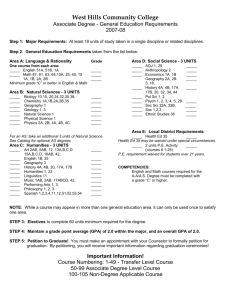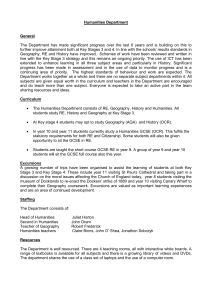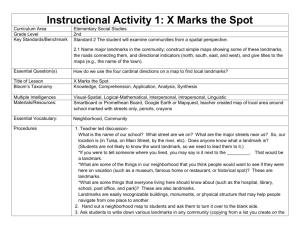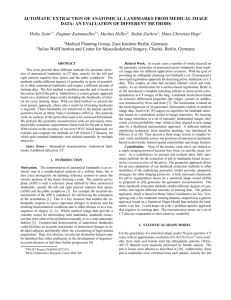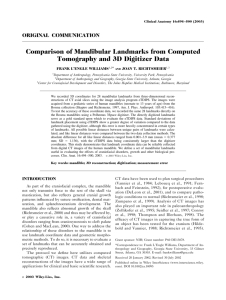Level 6 Annotated student work sample
advertisement
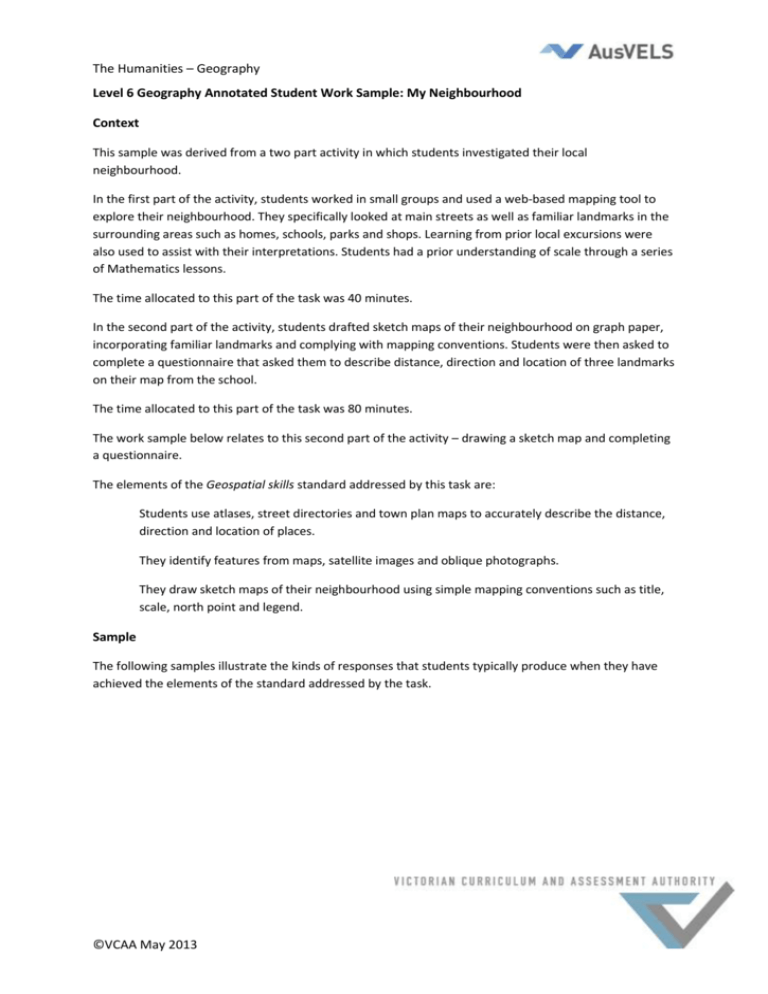
The Humanities – Geography Level 6 Geography Annotated Student Work Sample: My Neighbourhood Context This sample was derived from a two part activity in which students investigated their local neighbourhood. In the first part of the activity, students worked in small groups and used a web-based mapping tool to explore their neighbourhood. They specifically looked at main streets as well as familiar landmarks in the surrounding areas such as homes, schools, parks and shops. Learning from prior local excursions were also used to assist with their interpretations. Students had a prior understanding of scale through a series of Mathematics lessons. The time allocated to this part of the task was 40 minutes. In the second part of the activity, students drafted sketch maps of their neighbourhood on graph paper, incorporating familiar landmarks and complying with mapping conventions. Students were then asked to complete a questionnaire that asked them to describe distance, direction and location of three landmarks on their map from the school. The time allocated to this part of the task was 80 minutes. The work sample below relates to this second part of the activity – drawing a sketch map and completing a questionnaire. The elements of the Geospatial skills standard addressed by this task are: Students use atlases, street directories and town plan maps to accurately describe the distance, direction and location of places. They identify features from maps, satellite images and oblique photographs. They draw sketch maps of their neighbourhood using simple mapping conventions such as title, scale, north point and legend. Sample The following samples illustrate the kinds of responses that students typically produce when they have achieved the elements of the standard addressed by the task. ©VCAA May 2013 The Humanities – Geography Annotation A. Uses title, scale, north point and legend to draw a sketch map of the neighbourhood. Landmarks are identified in the legend. Page | 2 The Humanities – Geography Page | 3 The Humanities – Geography Annotation A. Uses geographical language of distance and direction in describing how to get to the landmarks from the school. B. Uses direction and references on sketch map to accurately describe the location of the chosen landmarks C. Demonstrates an understanding of distance in relation to scale D. Interprets map to calculate shortest distance. Page | 4




